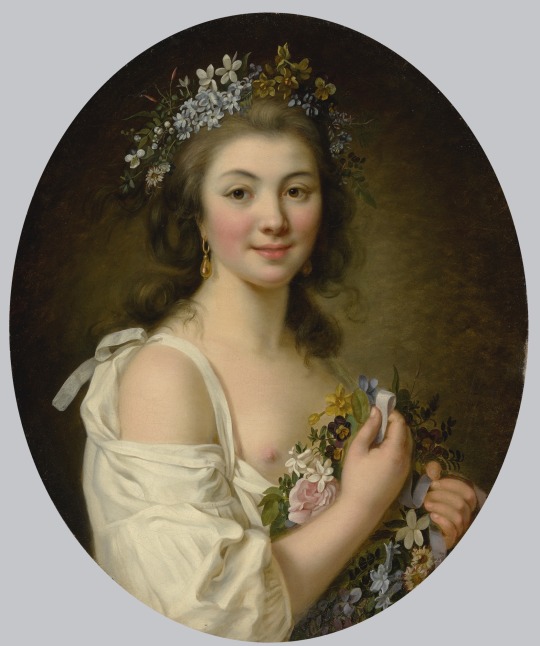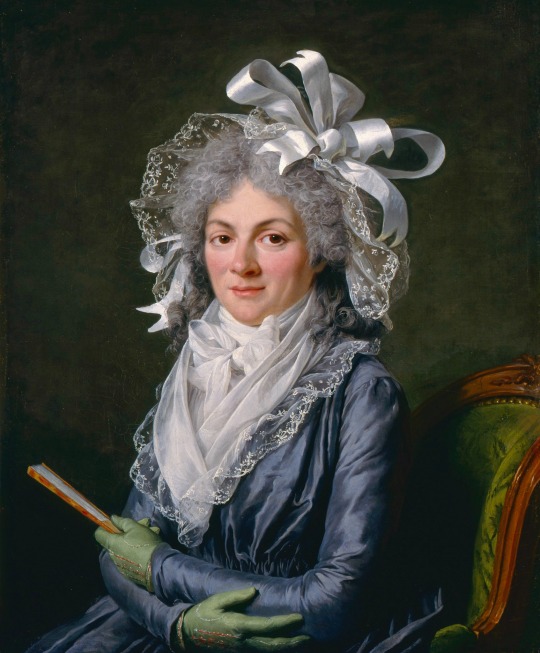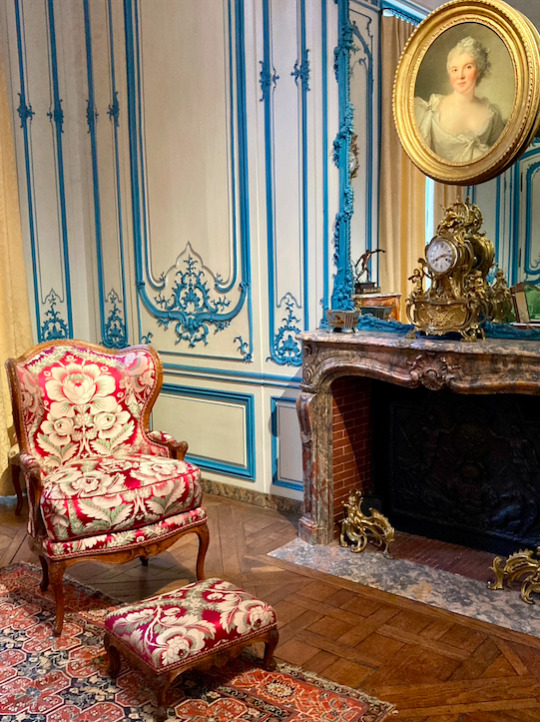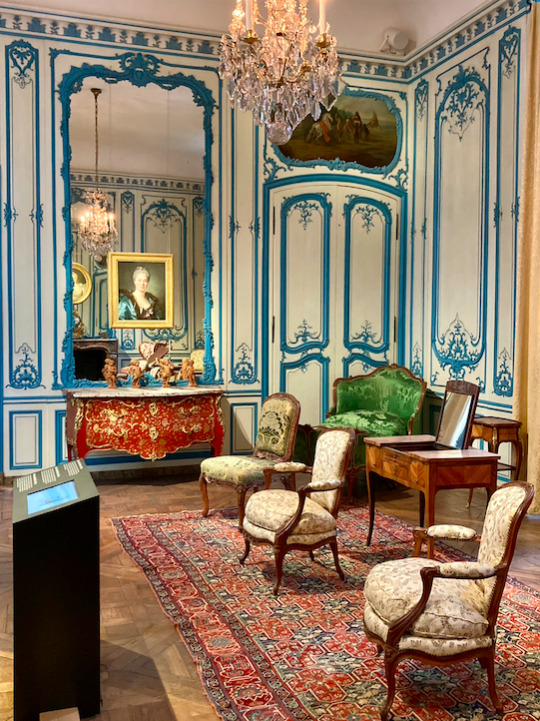#Sillery
Explore tagged Tumblr posts
Text

"M. L. Bilodeau est trouvé mort dans sa cabane," Le Soleil. April 12, 1943. Page 9. ---- M. Leonidas Bilodeau, gardien de nuit sur les chantiers de l'égout collecteur, à St-François d'Assise, a été trouvé mort dans la cabane du surveillant, ce matin, par des employés de la ville qui venaient reprendre leur travail. La macabre découverte a été faite par M. Lazare Paradis, un plombier, qui s'empressa aussitôt d'appeler le docteur Mainguy et le sergent de police Emile Bilodeau, du poste de Limoilou. M. Bilodeau était âgé de 65 ans environ et demeurait au numéro 3. rue Sheppard, à Sillery.
Lorsque la découverte du corps de M. Bilodeau a été faite, ce matin, vers 6 heures 30, la mort remontait à quelques heures déjà. Tout indique que c'est en voulant pelleter du charbon pour jeter dans sa fournaise que M. Bilodeau est décédé.
Les restes mortels du défunt ont été transportés à la morgue où le docteur Paul-V. Marceau a fait les recherches d'usage. Il a été établi que M. Bilodeau était mort de cause naturelle.
#ville de québec#sillery#limoilou#dropped dead#dead at his post#nightwatchman#natural causes#canada during world war 2
0 notes
Note
Wait i just had an epiphany. Are you also in 2007
haha yeah???? why?????😁
#briar answers#rotomblr#// this is just for the sake of the rotomblr sillery :-3 its subject to change#// but i want my blorbos to all hang out
36 notes
·
View notes
Text
certified hood classic stimboard
for @operazthev4mp1re ♡ sorry if u hate notifs









💿 🎂 🥁 / 🧁 💙 🧁 / 🥁 🍬 📀
i have never made a stimboard quicker. this took me under an hour. the power of halfassed sillery..
#the band ghost#stimboard#blue stim#gray stim#?#sprinkle stim#cupcake stim#baking stim#drum stim#vinyl stim#liquid vinyl stim#cd stim#pebble ghoul#ghost the band#ghost bc#peeble ghoul#<-as i love to call him#hey does anyone know how to block people but just for a sideblog and not a main? asking for myself
9 notes
·
View notes
Note
Do you know the primary source (if there is one) for the Brissotin all going to their death singing the Marseillaise?
The best description of the execution I’ve got so far is the one published in number 64 of Bulletin du Tribunal Criminel. According to it, the girondins did sing ”the first four verses of the anthem of the Marseillaise” as they were being brought from the Revolutionary Tribunal to the Conciergerie prison right after the death sentences had been passed on October 30. When they on the next day were shipped off to their fate, the bulletin does however report that, once arrived at the Place de la Révolution, the girondins sang not the Marseillaise but rather the refrain of the one year older Veillons au salut de l'Empire, another revolutionary song.*
In number 213 of his Révolutions de Paris (October 28 1793) Louis Marie Prudhomme him too writes that it was Veillons au salut de l'Empire the condemned sang at the foot of the scaffold:
…Never, despite the bad weather, did an execution attract more spectators and appear so necessary for the maintenance of the republic. Despite what some of the condemned said on the road and on the scaffold, who shouted: long live the republic! but you will not have it, one was very convinced that their death contributed not just a little to consolidating it. Several also at the foot of the guillotine, embracing each other, sang this well-known refrain: Plutôt la mort que l’esclavage; C’est la devise des français.
Other contemporary journals mentioning the execution that I could lay my hands on only announce that the 21 girondins have been sentenced to death and the execution has taken place (Le Moniteur, number 42, November 1), Le Créole Patriote, number 99, October 31) and Journal de la Montagne, number 152, November 1).
In a letter written November 6 1793, a week after the execution, the former duchess of Elbeuf Innocente-Catherine de Rougé reported that the girondins had gone to their demise ”singing about the nation’s glory,” but without specifying which songs:
The bishop of Calvados and the count de Sillery were in the same cart along with the confessors they had asked for; the others did not request one. Brissot and one other, following in the next cart, were clearly distressed. The rest, all young people aged twenty-seven, twenty-nine, thirty, thirty-two, followed on behind laughing, singing about the nation’s glory, and shouting out to the people ‘Long live the Republic’. And it is in this manner that these 21 individuals entered into the great light of eternity.
Finally, in his Memoires d'un détenu: pour servir à l'histoire de la tyrannie de Robespierre (1795) Honoré Jean Riouffe, a fellow prisoner of the Conciergerie, claims the girondins sang a modified version of the Marseillaise the night before their execution:
It was patriotic songs which burst out simultaneously, and all their voices mingled to address the last hymns to liberty; they parodied the song of the Marseillais in this way: Contre nous de la tyrannie; Le couteau sanglant est levé. etc. All this terrible night resounded with their songs, and if they interrupted them, it was to talk about their homeland, and sometimes also, for a meeting of Ducos.
*The book Brissot de Warville; a study in the history of the French revolution (1915) interestingly enough cites Bulletin du Tribunal Criminel as the source for the girondins singing the Marseillais on their way to the scaffold and not the Conciergerie…
#frev#ask#french revolution#the girondins on according to legend: sings the Marseillaise#the girondins according to primary sources: sings Veillons au salut de l'Empire#danton according to legend: shouts that robespierre shall follow him when the tumbril passes by his window and tells camille to calm down#danton according to primary sources: doesn’t give a damn about the world around him and just chats to those next to him (not camille)#camille according to legend: shouts and cries to the people to recognize him as the man of july 12#camille according to primary sources: contains himself but barely and rips his shirt apart struggling to tear himself away#lucile according to legend: thrilled about dying so she can be reunited with her husband#lucile according to primary sources: just calm and stoic and meeting death with a brave face#i’m not morbid you’re morbid!!#also who in the world is surprised it’s camille who best matches up with his overdramatic legend…
27 notes
·
View notes
Text


Stéphanie Félicité, Marquise de Sillery, Comtesse de Genlis (25 January 1746 — 31 December 1830)
Madame de Genlis was a French writer who maintained a long correspondence with Napoleon and was on the government’s payroll from 1801 to 1814. There is a lot of debate about the nature of the correspondence. Some contemporaries and historians believe she was Napoleon’s spy.
Lady Morgan asked Madame de Genlis about this:
“Buonaparte,” she said, “was extremely liberal to literary people — a pension of four thousand francs, per annum, was assigned to all authors and gens-de-lettres, whose circumstances admitted of their acceptance of such a gratuity. He gave me, however, six thousand, and a suite of apartments at the Arsenal. As I had never spoken to him, never had any intercourse with him whatever, I was struck with this liberality, and asked him what he expected I should do to merit it? When the question was put to Napoleon, he replied carelessly, ‘Let Madame de Genlis write me a letter once a month.’ As no subject was dictated, I chose literature, but I always abstained from politics.”
Source: France, Lady Morgan, published 1817, p. 360
An outline of her life and career can be read in Destins de Femmes, French Women Writers, 1750-1850 by John Claiborne Isbell, (published 2023).
#Madame de Genlis#Genlis#lady Morgan#Napoleon#napoleon bonaparte#napoleonic era#women writers#first french empire#french empire#women’s history#art#French art#lemoine#Adélaïde Labille-Guiard#Marie-Victoire Lemoine#female writers#1800s#history
51 notes
·
View notes
Note
hey i saw your tags on the post about niche subject books and with southern folklore heads up there are some books about folklore in the mississippi delta, idk if they are good or not as i havent gotten my hands on them but there is "haunted mississippi delta and beyond" by barbara sillery and "mississippi lore and legends" by alan brown. i dont know if thats what youre searching for but thought id share the info just in case! good luck on your search tho i hope you eventually find what youre looking for!
i appreciate these recs, they’re def related to what I was looking for. thank you sm!!🫶🏽
#answered#I have time today…tempted to go to this bookstore that has a nice section dedicated to southern folklore…💭
3 notes
·
View notes
Text

Le “Salon" de l'ancien "Hôtel Brûlart de Sillery" (circa 1730) installé dans le parcours des Collections Permanentes du Musée Carnavalet, Le Marais, Paris, novembre 2024.
5 notes
·
View notes
Text
NOOO THIS IS SO TRUE!!!! i vibe hard with fujoshi/himejoshi kagami. god i need to draw these losers so bad
It would be fun to see Felix, Adrien and Kagami as fallen angels in the world of Panty and Stocking with Garterbelt
#also kagami would have a katana right? for no better reason than the vibes#also you don't get it alenachelk i take my silly SO seriouslt#i'm sillerious
20 notes
·
View notes
Text


Sillery, Quebec
10 notes
·
View notes
Text

Robert Pilot; Sillery from the Battlefields, Quebec
20 notes
·
View notes
Text
The person I want to know more about the most in the French Revolution is Sillery but I don’t know where to start. Most of the interesting info about him seems to only be in French and I don’t trust myself to read/translate accurately.
The Sillerys and Pamela show up in the most random places though and I want to know more.
3 notes
·
View notes
Text
Haunted States of America: Louisiana

Ghosts of the Vieux Carre: A Self-Guided Walking Tour (1999) by Bentley Tours
New Orleans' French Quarter, also known as the "Vieux Carre," is the oldest part of the city--so, naturally, there are quite a few ghosts to be had. While Ghosts of the Vieux Carre is not our only book with a guided ghost tour (see our post on Florida's Daytona Ghost Walk), it is unique in that it's accompanied by a cassette tape so that people can listen along as they take the tour.
[tape]
It also includes a pocket map and glossary of New Orleans lingo for those unfamiliar with the city.

(The link, unfortunately, no longer works.)
Read Ghosts of the Vieux Carre to learn about, as the book's summary describes:
A spurned woman wreaks vengeance on her unfaithful lover and returns to haunt the scene
A visiting Middle-Eastern dignitary and his entire household, brutally assassinated, are doomed to remain in the courtyard in which they are buried
A powerful Voodoo priestess presides over mysterious rituals and ceremonies in her yard
A jolly priest with earthly desires keeps a ghostly eye on his parish
Other books in our collection about ghosts in New Orleans include Haunted New Orleans: Ghosts & Hauntings of the Crescent City (2000) by Troy Taylor and New Orleans Ghosts (1993) and its sequel (1999) by Victor C. Klein.
For books about Louisiana ghosts in general, check out
George, the Uninvited Ghost (1978) by Helen Zumo
Haunted Louisiana: True Tales of Ghosts and Other Unearthly Creatures (1992) by Christy L. Viviano
The Haunting of Louisiana (2001) by Barbara Sillery
The Browne Popular Culture Library (BPCL), founded in 1969, is the most comprehensive archive of its kind in the United States. Our focus and mission is to acquire and preserve research materials on American Popular Culture (post 1876) for curricular and research use. Visit our website at https://www.bgsu.edu/library/pcl.html.
5 notes
·
View notes
Note
Hi,
In a lot of books I've read that the three members of the Committee of Public Safety most intent on having the Dantonists executed were Barére, Billaud-Varenne and particularly Saint-Just; however, I have never seen a sufficient explanation as to why. (I know about the gossip such as the Sillery affair or that Saint-Just and Desmoulins hated each other but I don't think such trivival things really contributed to them wanting to have the Dantonists executed.) Could you explain if it was really these 3 members who were hellbent on the whole affair and why the others might have been reluctant about it? Furthermore, about Lucile: to what extent is it true that the letter upon which her arrest was based was forged by Saint-Just? Because I have read that various times and also various times that Saint-Just had absolutely nothing to do with the letter. Can you please give me recommendations (books, articles) about the whole Dantonist affair because I feel that most I have read this far is incredibly biased or just simplistic.
Thnak you so much.
I have wondered the exact same thing, because you’re right, it has been stated by many historians that a certain number of CPS and CGS members (though not necessarily always the exact three you listed) were particulary eager to put down the Dantonists. This often gets contrasted with Robespierre’s alleged more hesitant attitude:
It was on the same day, perhaps, that, after much hesitation and many discussions at the Committee, [Robespierre] was at last persuaded by Billaud-Varenne and Collot d’Herbois to consent to the proscription of Danton. Robespierre (1935) by JM Thompson
But the fate of the ‘Indulgents’ was still to be resolved. In late March there were desperate meetings between Robespierre and Danton as pressure mounted for arrests. Robespierre remained hesitant — what exactly was Desmoulins’ offence? — but Billaud and Collot, worried by what the proscription of Hébert and his allies might mean for them, were unrelenting. Robespierre: a revolutionary life (2010) by Peter McPhee, page 190
In the government committees, the dabate has been vivid. Those most up in arms about Danton and those close to him have been Amar, Voulland, Billaud-Varenne and Collot d’Herbois, but it’s Saint-Just who has been assigned with writing a report against them. Robespierre (2014) by Hervé Leuwers, chapter 21
Collot d’Herbois and Billaud-Varenne, who had both been close to the Cordeliers, argued fiercely that the Committee should strike down the Dantonists. For a long time Billaud-Varenne and Robespierre had been at loggerheads over this. For several months Robespierre resisted killing Danton. Choosing Terror (2014) by Marisa Linton, page 218
But of all those listed here, Billaud-Varennes is the only one for whom I’ve found sufficient evidence when it comes to hostility towards the dantonists, as he on several times is recorded to have reported his eagerness when it came to silencing Danton. As can be seen, he does however never really give a satisfying answer as to why, other than the fact that he saw Danton as dangerous.
The first time I denounced Danton to the committee, Robespierre rose like a madman and said that he saw my intentions, that I wanted to lose the best of patriots. Billaud-Varennes accuses Robespierre on 9 Thermidor 1794
Billaud-Varennes: If the misery of Danton is a crime, I accuse myself of it: because I was the first to denounce Danton; I said that if this man existed, freedom would be lost. If he were in this enclosure, he would be a rallying point for all counter-revolutionaries. Danton was Robespierre's accomplice; for the day before Robespierre consented to abandon him, they had been together in the countryside, four leagues from Paris, and had returned in the same carriage. I ask you if it is for few men that the Convention must vote at this moment. I declare that, if the intriguers, the thieves could have the upper hand, I would kill myself. Les crimes des sept membres des anciens comités de salut public et de surete general (1794) by Laurent Lecointre, page 23
I repeat it for you, Danton is the only representative of the people whose punishment I provoked, since he to me seemed like the most dangerous of conspirators. Réponse de J.N Billaud, représentant du peuple, à Laurent Lecointre, representant du peuple (1794) page 38
The last political opinions of Billaud corrected the old ones only on purely individual points. Thus, the death of Danton was then in his eyes a crime, because of the immense services he had rendered. "Alas!" he would often say, I was too directly involved in it and with a terrible hatred. The misfortune of revolutions is that you have to act too quickly; you have no time to examine: you act only in full and burning fever, in fear, I understand, of seeing your ideas aborted. Danton and his friends were clever people, invincible patriots at the tribune or in public action, and we massacred them! Unlike us, they did not, except for the brave Westermann, the Murat of the Republic, have their hands free from trafficking and plunder; they loved luxury too much but they had a noble and revolutionary heart; you will know their services one day, when the sincere history of our time is written. That of M. Lacretelle is only a work without facts, a work made up of a rhetorician. I remain with the intimate conviction that 18 Brumaire would not have been possible, if Danton, Robespierre and Camille Desmoulins had remained united at the foot of the tribune. Billaud Varennes — mémoires inédits et correspondance (1893) page 236-237
There’s also the following claim said to originate from Billaud in McPhee’s Robespierre biography that I’ve honestly been interested in since the first time I read it. No source is cited and I’ve not yet been able to discover from where it comes:

On January 13, Billaud also openly opposed Danton when the latter defended the recently arrested Fabre d’Eglantine, exclaiming ”Woe to whoever sat next to Fabre d'Églantine, and who is still his dupe.”
For the rest of those mentioned however, I not only had a hard time finding reasons for them to be particulary against Danton, but also evidence they actually even were against him more than anyone else. Since private papers where they might have spoken their mind more freely are hard to come by for most of these people, I’ve chosen to mainly look over the minutes from the Convention and the Jacobin club between December 1793 (when the bickering between the hébertists and dantonists began) and the dantonists’ execution in April 1794. That colorful and devisive opinions are hard to find here might not be all that strange given the fact they needed to appear somewhat unified before the public. But I would still say my findings are rather inadequate for the claims cited above.
Starting with Barère, we know that he on December 26 denounced Desmoulins (without mentioning him by name) when talking about ”periodical writers who […] revive the counter-revolutionaries, and warm the ashes of the aristocracy.” He did however also say that Camille was doing this ”unknowingly and perhaps unintentionally,” which is very similar to how Robespierre chose to defend him on January 7. On April 1 Barère also voiced his support for the dantonists’ arrest at the Convention, but nowhere near as strongly as Robespierre had right before him. These were the only times Barère actually said anything about the affair during these four months that I could discover… I also didn’t see Barère talk about any particular role he might have had in it in his memoirs, though given the nature of those kinds of publications that doesn’t have to mean very much.
Collot did him too denounce Camille’s journal without naming his name on December 23. He denounced him again on January 5, but opposed expelling Camille from the Jacobins, which had been suggested on both December 21 and December 31, saying that ”the aristocrats have pronounced that Camille Desmoulins would be driven out of the Jacobins: let that go; the club will judge in its wisdom what is to be done; but let us not forget what an old patriot has done for the public good.” He only proposed the journal be censored, which is again the same thing Robespierre would also later ask for. At the same meeting Collot did however ask for Philippeaux to be expelled from the club, something which Robespierre would instead declare unnecessary two days later, but this on the grounds that Philippeaux had never really been a worthy member anyway.
One rather common thesis is that Collot (and Billaud) were close to the hébertists and for that reason wanted to get rid of Danton, and even that getting Danton’s head was their ultimatum for helping obtain that of Hébert. As evidence for this is often listed the fact that Collot on December 21 openly defended the hébertist Ronsin who had been arrested four days earlier, was celebrated by Hébert in Le Père Duchesne as well as the fact that he on March 7 went to the Cordeliers Club to preach union with its members. In Collot d’Herbois: lègendes noires et révolution (1995), Michel Biard does however dismiss the idea that this can be used as evidence Collot himself was a hébertist, arguing that he defended Ronsin to protect himself since the latter had been his collegue in Lyon and not because he agreed with him politically (if he had, he also would have defended the other arrested hébertist Vincent) and that Hébert praising Collot doesn’t mean Collot praised Hébert.
As for Saint-Just, he was away from Paris during much of the period (From October 17 to December 4, December 10 to December 30, and finally January 22 to February 13). It was of course he who, with the help of Robespierre, had prepared the dantonists’ indictment, but that he also did for the hébertistswhy did they always get him to write all the important reports btw?
The CGS members Amar and Voulland I found to barely have spoken at all during the studied period. On February 2, it was however the latter who suggested setting the imprisoned hébertists Vincent and Ronsin free, which I suppose at least reveals which side he was on. Amar was in his turn the one who had written the report regarding the East India Company scandal, in other words the people the dantonists would end up getting executed alongside. Though curiously, when reading the report at the Convention on March 16 (the only time he is recorded to have spoken that I could find) Amar received criticism from both Billaud-Varennes and Robespierre, who claimed it too narrow since it only focused on the financial side of the affair. At the same time, Robespierre called on the Convention to defend its honor and purge itself of traitors on its midst and demanded that Amar’s report be revised to express these ideas… The article André Amar and his role in the Committee of General Security (1961) also didn’t mention anything in particular about its subject’s role in the dantonist purge.
All those listed had however been attacked by Desmoulins in his two more recent publications (Saint-Just, Barère and Billaud in Lettre au général Dillon, Barère, Collot, Amar and Voulland in Le Vieux Cordelier), and, like you said, SJ and Camille had also been personal enemies since 1791. But also like you said, it is hard to say exactly in what way this affected them, and if it was to the extent that they actually wanted the author dead…
tl;dr, I actually don’t know what motivated these guys to put down the dantonists, because I don’t understand what the claim that they were extra eager to get them even stems from.
As for the story of Lucile Desmoulins and the letter from Arthur Dillon, I’ve already written about it in this post, but to quickly recap, Saint-Just (or anyone else for that matter) did not go so far as to commit forgery. Dillon himself admitted he had written Lucile a letter, however, he also underlined that it had simply been about encouraging her and not at all an invitation to conspire against the government. Lambert, the man Dillon had asked to deliver the letter, did in his turn claim that after he had refused to, Dillon tore the letter up before it could even leave his side. Finally, Lucile answered ”no” both when asked if she had received the letter and when asked if she had received money from Dillon.
Finally, when it comes to good books or articles on the dantonist affair, I found chapter 8, Le chef d’un groupe indulgent ? and 10, ”Tu montreras ma tête au peuple ; elle en vaut la peine” of Danton: le mythe et l’histoire (2016) to be quite useful. The first chapter deals with the ”indulgent offensive” while simultaneously questioning the idea that there really did exist a cohesive group that under the leadership of Danton sought to slow down with ”the terror,” while the second is about their trial and execution. I also really liked the account in Camille et Lucile Desmoulins: un rêve de république (2018). Of course, both these books are in French, which I don’t know if you know or not, and none can be found for free legally… When it comes to English litterature on the subject, I’ve yet not found anything that I think truly has it all, but two books that can at least be found for free are Camille Desmoulins and his wife — passages from the history of the dantonists (1876) (bias in Camille’s favor and sometimes romantizing, but also making use of several primary sources) and Danton (1978) (I’ve honestly not read that part of the book, so who knows if it’s any good…)
#hopefully i didn’t miss something important that will make this post seem dumb#ask#frev#billaud varenne#saint-just#danton#barère#robespierre
33 notes
·
View notes
Text
"Sorry." Navarro ushers Milly and Henry out of the room now. He goes to Rin, asking what Sandra is saying. Because that language doesn't sound human. After hearing Rin's answer:
'Oh dark one in faith, make the innocent suffer for the wrongdoings of their own. Let their souls burn as it eats who dared disturb it's sleep…all shall burn within the heated curse…'
"Shit...." Navarro cursed under his breath, "What kind of object did Carson bring in. No....where did he get it??" Hearing how the spirit fractured Becker's family. Now do the kids deserve a scare after messing with things. Sure. But this is going way too far. Sandra doesn't deserve this and neither her parents.
As for what will happen to Sandra. Rin answered which really sounds bad news now.
"Seeing that, we need to get to Jacob." Said Navarro. The last person on their list. Jacob P. Sillery. "You two. Is Jacob is at his house or what?" He asked the two; Milly and Henry.
Rin was speechless but he tries to keep cool. "I..I'll say when we leave." he said then looks to the nurse. "Sorry if we upset her ma'am." he saw the nurse worried but shook her head.
"It's not you dear. This happens to any that visits and tries to speak to her. She did the same thing to her own parents too. Her mother broke down in tears and her father was upset like they couldn't do anything to help their child. But it's alright." she said before seeing the staff looking to a dazed Sandra.
"When she is more stable you are more welcome to visit again.." she said. "Though, I think we will have to give her time to rest." she said but Rin understood to see Henry and Milly leaving still horrified by what they saw.
When Rin did leave he sighed to look at Navarro. "She was speaking in a old language that the curse speaks. This is a ancient cursed, Navarro. A really dangerous one. Though, it said this:
'Oh dark one in faith, make the innocent suffer for the wrong doings of their own. Let their souls burn as it eats who dared disturbed it's sleep…all shall burn within the heated curse…'
"..Wait, but what does that m..mean? What happened to Sandra?" Milly asked hearing that.
"..It means either this curse really damaged her to no return or it's messing her up even worse...." he said.
#ic#rp#thesilverpeahenresidence#thesilverpeahenresidence ( the explosive hero dynamight katsuki bakugo )#thesilverpeahenresidence ( the phantom thief that change hearts ren amamiya )#thesilverpeahenresidence ( the chainsaw man denji hayakawa )#the silver peahen residence ( the greenette power hero deku izuku midoriya )#thesilverpeahenresidence ( son of satan rin okumura )#thesilverpeahenresidence ( the weretiger detective atsushi nakajima )#timetickingtimebomb#our journey to forgiveness;rp#six claws;
2K notes
·
View notes
Text

Le “Salon" de l'ancien "Hôtel Brûlart de Sillery" (circa 1730) installé dans le parcours des Collections Permanentes du Musée Carnavalet, Le Marais, Paris, novembre 2024.
4 notes
·
View notes